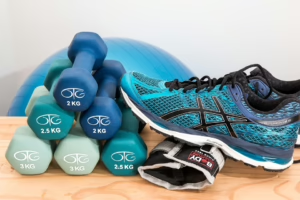Meal Prep Made Easy: Simple Tips for Healthy Eating on a Busy Schedule
In today’s fast-paced world, balancing a busy schedule with healthy eating can feel like an uphill battle. Between work commitments, family responsibilities, and social engagements, it’s easy to resort to unhealthy convenience foods or skip meals altogether. However, meal prepping is a time-saving solution that can help you maintain a nutritious diet while accommodating your hectic lifestyle. Here are some simple tips to make meal prep easy and effective.
1. Plan Your Meals
The foundation of successful meal prep begins with planning. Allocate some time each week to outline your meals. Consider choosing simple recipes that utilize similar ingredients to minimize waste. Aim for a mix of proteins, vegetables, and grains to ensure balanced meals. Whether you’re trying new recipes or sticking to your favorites, having a clear plan can streamline your grocery shopping and cooking processes.
2. Create a Grocery List
Once you have your meals planned, create a detailed grocery list. This helps you avoid impulse purchases and ensures that you have all the necessary ingredients on hand. Stick to the perimeter of the grocery store—this is where the fresh produce, dairy, and lean proteins are typically located—while limiting your time in the aisles filled with processed foods.
3. Choose the Right Containers
Investing in quality food storage containers can make meal prep easier and more efficient. Look for BPA-free, microwave-safe containers with airtight lids to keep your meals fresh. Opt for a combination of sizes for various portions, from single servings to family-sized meals. Clear containers allow you to see the contents at a glance, making it easier to grab and go.
4. Cook in Batches
Dedicate a few hours during the weekend or whichever day works best for you to cook in batches. Prepare large quantities of staples like grains, proteins, and roasted vegetables. Batch cooking not only saves time but also ensures you have healthy options ready to go throughout the week. For example, cook a big pot of quinoa or brown rice, grill several chicken breasts, and roast a variety of seasonal vegetables.
5. Use Versatile Ingredients
Incorporate versatile ingredients that can be used in multiple meals throughout the week. For instance, a large batch of roasted sweet potatoes can complement salads, grain bowls, or tacos. Additionally, season proteins in different ways to switch up the flavor without adding extra prep time. A simple marinade can transform chicken into a BBQ dish one night and a stir-fry the next.
6. Invest in a Slow Cooker or Instant Pot
If you find yourself short on cooking time during the week, consider investing in a slow cooker or Instant Pot. These kitchen appliances save time by allowing you to prepare meals with minimal hands-on effort. You can start a meal in the morning and return home to a delicious, home-cooked dish. Many recipes for slow cookers or pressure cookers are straightforward and can cook while you go about your day.
7. Keep Snacks Handy
Meal prep isn’t just for main meals; snacks are crucial for maintaining energy levels and avoiding unhealthy cravings. Pre-portion snacks such as nuts, yogurt, fruit, or veggie sticks into containers or bags. This makes it easy to grab a healthy option when you’re on the move or need a quick pick-me-up.
8. Stay Flexible
While having a meal plan is essential, flexibility is equally important. Life can be unpredictable, and your schedule may change. It’s okay to switch meals around or decide on a spontaneous night out. Avoid the guilt; instead, focus on making healthier choices when you can and save leftovers for busy nights.
9. Include the Whole Family
If you’re cooking for a family, involve everyone in the meal prep process. This not only helps you save time but also teaches kids valuable cooking skills and makes them more likely to try new foods. Assign age-appropriate tasks, such as washing veggies, measuring ingredients, or setting the table, to get everyone engaged.
10. Track Your Progress
Lastly, consider keeping a meal prep journal. Track what works, what doesn’t, and any adjustments that need to be made. This can help you refine your meal prep process over time and make it an integral part of your routine.
Meal prep doesn’t have to be daunting. By following these simple tips, you can streamline your food preparation, save time in the kitchen, and enjoy healthy, nutritious meals, even on your busiest days. With a little planning and organization, eating well becomes effortless, allowing you to focus on what really matters—enjoying life!
For more insightful resources on meal prep and healthy eating, visit [modern_footnote_source_link].


























Add Comment